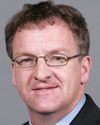Thank you.
First of all, I would like to go back a little before I respond to your question.
There is one thing that seems to be forgotten. On the river we're talking about, on the natural flow, during the mid-winter--like right now--the velocity of the flow was very minimal in the sense that it hardly flowed. Since the diversion of the rivers and the damming of the river there is a constant flow that passes the village all year round. That causes the disturbance of the waterbed and the mucky waterbed that flows into James Bay.
Before all this happened we used to see an abundance of waterfowl in the fall and even in the spring. Even though they weren't feeding on the eelgrass in the spring, they were feeding on other substances, off the growth of the shoreline. With that, right now, as I have experienced over the years, the mammals that grow under the seabed are declining also, not just the eelgrass; it's everything else. We used to have mussels in that area too, and they're no more, they're all gone. We only see the old shells on the shorelines that have been washed into the shore. Other species, other specks of material that used to grow in the saltwater bed, are declining also, and some of them have completely disappeared. You even see these air pockets, air ducts that are covered with mud. They used to be clear, and nowadays they're covered because of the disturbance of the water flow.
We used to have all sorts of other migratory birds. They're talking about the brant, they're talking about waveys, they're talking about Canada geese and various other species of birds. We used to have these in abundance. Our area had the most abundance along the coast. It went as far as between Eastmain and Wemindji, where the geese used to feed before they migrated south. They went as far as the cape up north. These are the feeding areas where the geese were in abundance in those days, in those years.
For me, without even doing any testing, I've noticed that what causes it is the constant flow of the river. As I said, nowadays it's a constant flow. Before, the velocity of the water would decline a little during the mid-winter. There was hardly any water flow. This didn't disturb the river waterbed, but now it's constantly disturbing it and creating a lot of muck from underneath, where it would go out into the sea and most likely kill every little living thing that was there before. Pretty well nothing really grows on the shores of James Bay, and more or less it's the same thing, I think, in Hudson Bay. In particular it's James Bay that we're concerned about, and partially Hudson Bay.
This is what we miss today, we don't see any waterfowl landing anywhere. This is true, what we have experienced so far.






